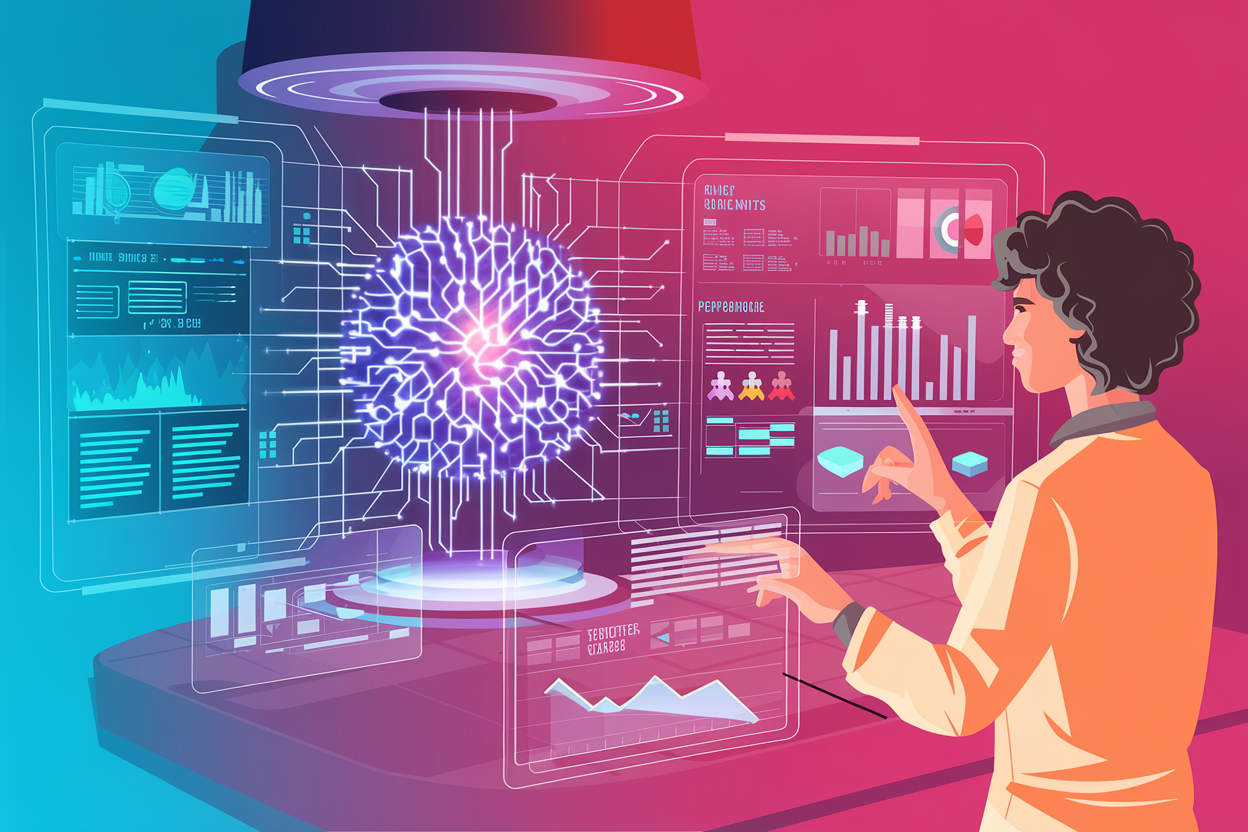Imagine a classroom of students quietly bent over their desks, each working through math problems on a digital platform. One student breezes through trigonometry exercises, another struggles with fractions, while yet another has unexpected bursts of brilliance followed by baffling stumbles. Now picture a subtle, tireless assistant—an unseen, AI-driven tutor—tracking these ups and downs in real time. This tutor provides precise hints and adjusts each child’s learning path, offering a genuinely personalized education. That future is closer than we might think.
For nearly a decade, “knowledge tracing”—the art and science of modeling what a student knows and predicting how they’ll perform next—has been hailed as a backbone of AI-driven tutoring systems. Yet until recently, even the most advanced deep learning methods lacked certain real-world practicality. They could make predictions, but they were often slow to adapt in massive classrooms and tended to sidestep the messy reality of many students answering many different types of questions at once.
A new effort, dubbed DKT2, seeks to close this gap between potential and practice. It builds on years of research in modeling students’ knowledge states (a fancy term for everything a student knows or doesn’t yet know) and aims to tackle the problem at a grander scale. The concept emerges from something you might never expect to find in your typical AI conversation: a synergy of educational psychology, item response theory, and a cutting-edge neural network architecture known as xLSTM.
The Secret Sauce: xLSTM
Any conversation about neural networks quickly turns to talk of “long short-term memory,” or LSTM, a venerable approach to letting machine-learning models “remember” what happened in previous steps. LSTM has powered everything from early speech recognition to time-series financial predictions. But in large-scale education—where student interactions can number in the millions—classic LSTM starts to buckle. It’s prone to forgetting older information too soon and gets bogged down in sequential processing. Enter xLSTM, an extended blueprint that offers a more flexible memory and faster parallelization. Think of it as a renovation of a beloved but cramped house, giving it bigger windows for more light, an open floor plan for free movement, and a better filing system for storing all your stuff.
That “stuff,” in the DKT2 approach, is data about each student’s successes and missteps. xLSTM shines by allowing the model to revise what it remembers on the fly, like a teacher who constantly updates her lesson plan as she grasps how each student is truly progressing.
Merging Psychology and AI
What truly sets this new model apart is the integration of human insights from educational research. In DKT2, the model learns from two longstanding ideas:
- The Rasch Model, which helps calibrate question difficulty and better represent where each student stands relative to the tasks at hand. Think of it as a barometer: one question might be “easy” for a seasoned geometry whiz but intimidating for a newcomer.
- Item Response Theory (IRT), an approach that breaks down a student’s overall knowledge into what’s “familiar” and “unfamiliar,” shedding light on the invisible leaps and gaps in their understanding.
These concepts have been used for decades by test designers, but only recently have AI models started using them in real time. The beauty is that it not only enhances accuracy but also lends a degree of interpretability. Teachers and administrators can peek under the hood and see why the model thinks a student is slipping or soaring—a critical piece for trust in educational systems.
Breaking Away from Guesswork
Earlier AI-based tutoring systems sometimes relied on partial or even future data to guess a student’s next move, creating awkward scenarios in real classrooms. DKT2, by contrast, focuses on applicable data—what the system already knows up to a given moment—making its predictions more practical and transparent. And rather than predicting just one concept at a time, it also offers a comprehensive understanding of a student’s multiple knowledge areas, capturing the complexity of actual learning.
Why It Matters to All of Us
It’s easy to shrug off algorithmic improvements as mere coding wizardry. But if you’re a parent who’s seen a child fall behind for lack of personalized feedback—or a teacher struggling to mentor thirty different minds simultaneously—these breakthroughs carry weight. The endgame is an education system that flexes to each student’s evolving knowledge state. Instead of a one-size-fits-all approach, you get adaptive lessons that fill gaps swiftly and encourage leaps into new territory.
As our world grows ever more reliant on lifelong learning—where upskilling is the new normal—models like DKT2 hint at a future where technology doesn’t just deliver content but empathizes with human learning curves. What if your next online course, language app, or professional certification program came armed with a tutor that knew your sweet spots and blind spots better than you do?
A Call to Reflect and Act
We’re standing at a crossroads where advanced AI merges with the human craft of teaching. The promise is tantalizing: ensuring fewer students slip through the cracks. But these systems can’t succeed in isolation. School boards, teachers, and even students themselves must engage in shaping these tools—demanding transparency, ethical data use, and an unwavering commitment to real-world classroom needs.
If you’re an educator, consider inviting your district’s tech leaders to evaluate how these new AI approaches might support your curriculum. If you’re a parent, ask about the systems your child’s school uses and how they protect student privacy. And if you’re a student—adult or child—voice what works and what feels off in computer-driven learning platforms. By taking these steps, we push these remarkable models toward serving not just an abstract ideal but real students, each with a unique spark, waiting to be lit.
